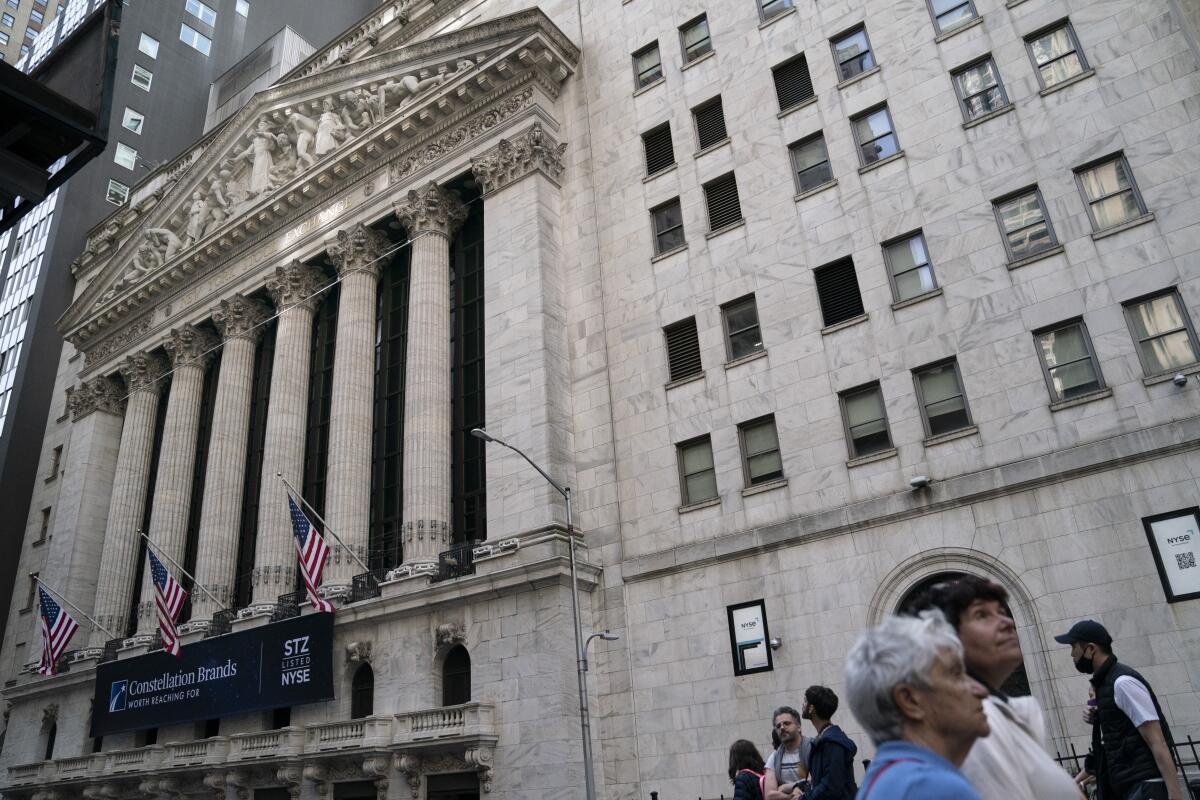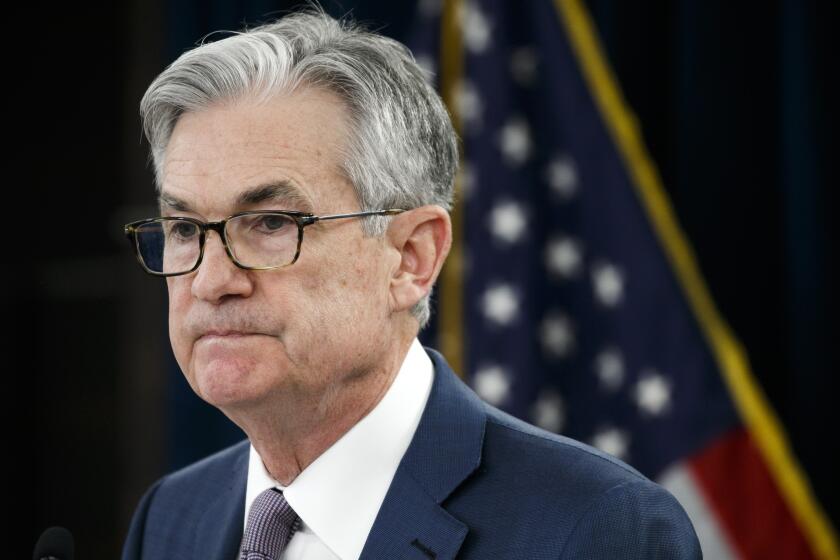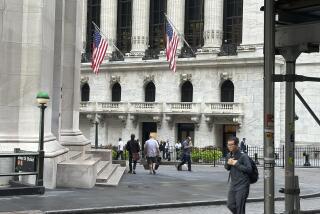Stocks slump, closing out worst quarter since early 2020

- Share via
Wall Street racked up more losses for stocks Thursday as the market closed out its worst quarter since the onset of the COVID pandemic in early 2020.
The Standard & Poor’s 500 fell 0.9%, its fourth consecutive drop. The benchmark index is now down 21% since it hit an all-time high at the beginning of the year. It entered a bear market earlier in June.
All told, the S&P 500′s performance in the first half of 2022 was the worst since the first six months of 1970.
“And in 1970 there was a solid rebound after that first half decline,” said Lindsey Bell, chief markets and money strategist at Ally Invest. “This time around, the impact of the Fed, the impact of inflation and the uncertainty of where growth goes from here is really weighing on investors’ minds.... We just don’t know when the clouds of uncertainty are going to start to clear.”
The market’s steep decline this year has all but wiped out its gains from 2021, which was a banner year for the market as it emerged from its previous bear market in early 2020.
Rising inflation has been behind much of the slump for the broader market this year as businesses raise prices and consumers are squeezed tighter. Inflation remains stubbornly high, according to a series of recent economic updates.
The Federal Reserve and other central banks have been aggressively raising interest rates to try to slow economic growth to cool inflation. Higher rates can bring down inflation, but they also risk a recession by slowing the economy too much. They also push down prices for stocks, bonds, cryptocurrencies and other investments.
“What the market is trying to assess is when does it seem as if the Fed is going to have what it needs to ascertain that inflation is plateauing,” said Quincy Krosby, chief equity strategist for LPL Financial.
The S&P 500 fell 33.45 points to 3,785.38 on Thursday. It lost 16.4% in the April-to-June quarter, its biggest quarterly decline since it slumped 20% in the first three months of 2020, when the pandemic upended the global economy in a matter of weeks.
The Dow Jones industrial average fell 253.88 points, or 0.8%, to 30,775.43. The Nasdaq composite slid 149.16 points, or 1.3%, to 11,028.74.
Small-company stocks also fell. The Russell 2000 lost 11.38 points, or 0.7%, to 1,707.99.
The yield on the 10-year Treasury, which helps set mortgage rates, fell to 3.01% from 3.09% late Wednesday.
Technology companies were among the biggest weights on the market as investors continued to favor utilities and other traditional defensive stocks. Apple fell 1.8% and Exelon rose 2.2%.
Retailers and other companies that rely directly on consumer spending also posted some of the biggest losses, as they have all year. Amazon slipped 2.5% and Best Buy shed 2.9%.
Federal Reserve Chair Jerome Powell said there’s “no guarantee″ the central bank can tame runaway inflation without hurting the job market.
A measure of inflation that is closely tracked by the Fed rose 6.3% in May from a year earlier, unchanged from its level in April. Thursday’s report from the Commerce Department also said that consumer spending rose at a sluggish 0.2% rate from April to May.
The update follows a worrisome report this week showing that consumer confidence slipped to its lowest level in 16 months. The government has also reported that the U.S. economy shrank 1.6% in the first quarter, and weak consumer spending was a key part of that contraction.
Investors are worried that the U.S. could slip into a recession as inflation hurts businesses and consumers. A key concern involves the Fed’s interest rate increases, which could slam the brakes on economic growth and bring on a recession.
The situation has become even more complicated as COVID-19 lockdowns in China and Russia’s invasion of Ukraine compounded supply chain problems. The war in Ukraine prompted a surge in oil prices this year that resulted in record high gasoline prices. The OPEC oil cartel and allied producing nations decided Thursday to increase production of crude oil, but the amount will probably do little to relieve high gasoline prices at the pump and energy-fueled inflation plaguing the global economy.
“There’s no doubt this has been a difficult two quarters for the market, the U.S. economy, the U.S. consumer, and for the Fed’s job to control and curtail inflationary pressure,” Krosby said. “And yet, as we get into the beginning of the second half, so far companies have been managing and it’s the guidance they offer that is going to help set the tone over the next couple of weeks.”
More to Read
Inside the business of entertainment
The Wide Shot brings you news, analysis and insights on everything from streaming wars to production — and what it all means for the future.
You may occasionally receive promotional content from the Los Angeles Times.











